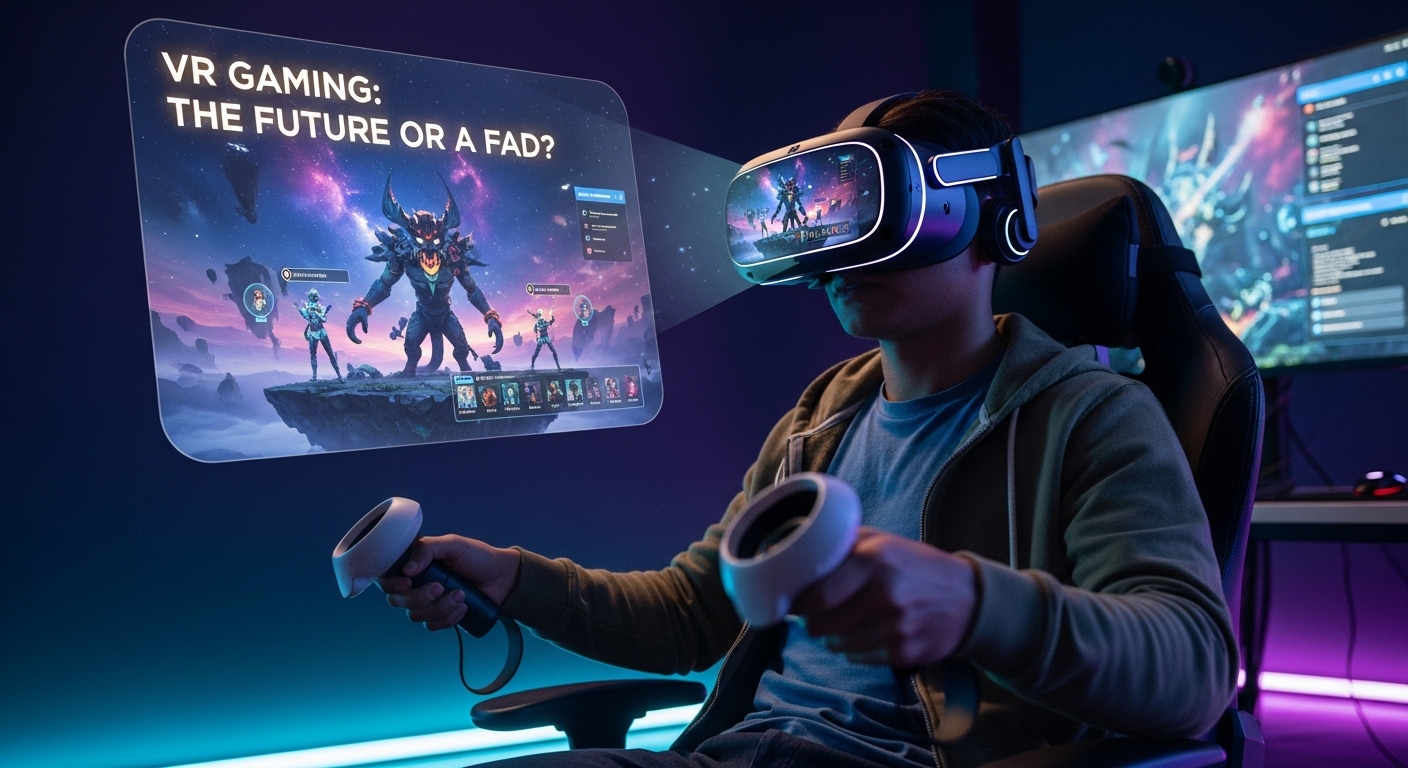Introduction to the Retro Gaming Renaissance
In recent years, a fascinating trend has emerged in the gaming world. Retro games, once considered relics of the past, are experiencing a powerful resurgence in popularity. These classic titles, originally developed in the 70s, 80s, and 90s, are no longer confined to dusty cartridges or outdated consoles. Instead, they are now celebrated by both nostalgic adults who grew up with them and curious younger generations discovering their magic for the first time. The revival of retro games is not just a passing fad; it reflects deep cultural, technological, and emotional reasons that explain why old-school gaming continues to thrive in an age dominated by advanced graphics and immersive virtual reality.
Nostalgia as a Driving Force
One of the most significant reasons for the comeback of retro games is nostalgia. For millions of gamers who spent their childhoods exploring pixelated worlds, hearing iconic 8-bit soundtracks, and mastering simple yet addictive gameplay mechanics, revisiting these classics feels like reconnecting with a cherished memory. Nostalgia carries emotional power, reminding people of simpler times when gaming was a shared joy among friends and family. Companies have realized the commercial value of nostalgia, leading to the re-release of retro consoles, remakes, and remastered editions of beloved titles. The emotional connection to childhood experiences ensures that retro games hold a permanent place in the hearts of many.
Simplicity in Gameplay Design
Modern video games often prioritize realism, vast open worlds, and complex storylines. While these advancements are impressive, they sometimes overwhelm players with steep learning curves and endless tutorials. Retro games, on the other hand, thrive on simplicity. Their straightforward mechanics, intuitive controls, and easy-to-understand objectives appeal to both veteran gamers and beginners. Whether it is the side-scrolling adventures of Super Mario Bros. or the fast-paced shooting in Space Invaders, retro titles highlight the essence of fun without unnecessary complications. This simplicity makes retro games more accessible and refreshing in an era of over-engineered gaming experiences.
Affordability and Accessibility of Retro Gaming
Another factor contributing to the comeback of retro games is their affordability and accessibility. Modern triple-A titles often require powerful hardware, frequent updates, and significant financial investment. In contrast, retro games can be played on inexpensive emulators, reissued mini consoles, or through digital marketplaces offering classic collections at affordable prices. The rise of mobile gaming has also brought retro classics to smartphones, ensuring players can enjoy them anytime, anywhere. This accessibility makes retro gaming attractive not only to nostalgic players but also to younger audiences looking for cost-effective entertainment.
Community and Cultural Connection
Gaming is not just an individual experience; it thrives on community and culture. Retro games have cultivated passionate fan communities that keep the spirit of these titles alive through online forums, conventions, speedrunning events, and tournaments. Gamers bond over shared memories, strategies, and the challenges of mastering classic titles. Retro gaming conventions such as RetroGameCon and expos dedicated to classic consoles attract thousands of fans every year. These communities contribute to keeping the culture of retro gaming vibrant, and the shared passion helps younger players discover the cultural importance of the games that shaped modern gaming.
Retro Gaming in the Age of Streaming
The rise of streaming platforms like Twitch and YouTube has given retro games a new life. Streamers often revisit old titles to entertain audiences with nostalgic gameplay, funny commentary, and speedrunning challenges. Watching retro games being played not only entertains older viewers who remember them fondly but also introduces younger audiences to classic experiences. The visual simplicity and short learning curve of retro titles make them engaging for audiences who may not want to commit to long modern story-driven games. In this way, streaming has transformed retro games from private nostalgia trips into shared cultural phenomena.
The Influence of Indie Game Development
Indie game developers have played a crucial role in the comeback of retro games. Many indie titles intentionally adopt pixel art graphics, chiptune soundtracks, and retro-inspired gameplay mechanics as a tribute to classic gaming. Games like Shovel Knight, Celeste, and Stardew Valley prove that the essence of retro design can still be successful in the modern market. These games are not simple imitations; instead, they blend nostalgic elements with modern innovations, creating experiences that appeal to both retro enthusiasts and new players. The success of indie games has shown the gaming industry that retro-inspired design has lasting commercial and creative value.
Physical Collecting and Retro Gaming as a Hobby
Beyond playing digital versions, many enthusiasts are drawn to the hobby of collecting physical retro games and consoles. The charm of holding an old cartridge, blowing the dust out of it, and inserting it into a console provides a tangible connection to the past. Collectors often seek rare games, limited editions, or boxed sets as part of their passion. Retro gaming stores, online marketplaces, and auctions have turned collecting into a thriving subculture. This collecting hobby not only fuels interest in retro games but also raises awareness of gaming history, preserving it for future generations.
The Role of Game Preservation
Game preservation has become a critical issue as many older titles risk being lost due to outdated hardware, expired licenses, and lack of official support. Dedicated archivists, preservation groups, and fan communities have taken on the responsibility of saving retro games. Emulators, ROM libraries, and digital archives allow players to revisit games that would otherwise be inaccessible. By preserving these titles, the gaming community ensures that the cultural heritage of video games remains intact. The recognition of video games as art and historical artifacts has further motivated institutions and organizations to treat retro games with the respect they deserve.
Generational Bridging Through Retro Gaming
Retro games are not only appealing to older generations but also serve as a bridge between parents and their children. Many parents introduce their children to the games they grew up playing, creating intergenerational bonding experiences. A father teaching his child how to play The Legend of Zelda or a mother sharing her love for Tetris creates a meaningful connection that transcends age. These games, with their timeless mechanics and universal appeal, allow families to connect through shared play, proving that the fun of retro gaming remains relevant across generations.
The Psychological Appeal of Pixel Art and Chiptunes
Retro games are characterized by their distinctive visual and auditory styles. Pixel art, with its bright colors and simple designs, has an aesthetic charm that modern ultra-realistic graphics cannot replicate. Chiptunes, the electronic music created using old sound chips, evoke a sense of joy and excitement. These stylistic elements have become iconic, influencing not only video games but also fashion, music, and art. The psychological appeal of retro aesthetics is undeniable, and many players find comfort in the simplicity and charm of these designs. This artistic uniqueness plays a significant role in keeping retro games relevant in modern times.
The Role of Major Companies in the Revival
Large gaming companies have actively fueled the retro gaming comeback. Nintendo’s release of the NES Classic Edition and SNES Classic Edition introduced preloaded libraries of retro titles, selling millions of units worldwide. Sega released the Sega Genesis Mini, and Sony launched the PlayStation Classic, all targeting nostalgic audiences. Additionally, official re-releases and remastered versions of games on platforms like Nintendo Switch Online have made retro titles more accessible. These initiatives prove that retro gaming is not just a fan-driven trend but a commercially valuable movement supported by the industry’s biggest players.
Competitive Retro Gaming and Esports
While modern esports often focus on contemporary multiplayer titles like League of Legends or Fortnite, retro games also have a competitive scene. Speedrunning, in particular, has become a popular way for players to challenge themselves and others in classic games. Events like Games Done Quick showcase retro games being completed at incredible speeds, drawing massive online audiences. This competitive aspect keeps retro games relevant, transforming them into more than just nostalgic experiences. Instead, they become arenas of skill, strategy, and community-driven excitement.
Educational Value of Retro Games
Retro games also offer educational benefits. Game design students often study them to understand the fundamentals of mechanics, pacing, and creativity. Since retro games were developed with limited technology, they demonstrate how developers used innovation to overcome constraints. This makes them valuable learning tools for aspiring designers. Additionally, playing retro games can help younger gamers appreciate the evolution of technology, understanding how the industry grew from simple 2D sprites to today’s immersive 3D experiences. The educational value of retro games ensures their continued relevance beyond entertainment.
Retro Games as a Form of Escapism
In today’s fast-paced and stressful world, retro games offer a form of comforting escapism. Their simple objectives, cheerful music, and lack of overwhelming complexity allow players to relax and enjoy stress-free entertainment. Unlike modern games that often require hours of investment, retro titles can be played in short bursts, making them ideal for busy lifestyles. For many, picking up an old favorite is like revisiting a childhood safe space, providing a break from the demands of adult life. This therapeutic quality explains why retro gaming is more than just a hobby—it is also a form of mental relief.
Influence on Pop Culture and Media
Retro games are not confined to gaming alone; they influence broader pop culture. Movies like Wreck-It Ralph and Ready Player One celebrate classic games, while retro aesthetics dominate fashion trends and art. Merchandise such as T-shirts, posters, and collectibles featuring pixel art characters remain popular. Music artists incorporate chiptune sounds into their songs, and filmmakers draw inspiration from old-school game storytelling. The lasting influence of retro games in pop culture reinforces their timeless appeal and ensures their continued visibility across multiple forms of media.
The Future of Retro Gaming
Looking ahead, the future of retro gaming seems brighter than ever. As technology advances, emulation becomes more accurate, preservation efforts become stronger, and accessibility continues to improve. New generations will keep discovering the joy of classics, while indie developers will keep reinventing retro-inspired experiences. Virtual reality may even open new ways to experience old games, blending nostalgic mechanics with modern immersion. Retro gaming will continue to thrive not only as a nostalgic phenomenon but also as a cornerstone of gaming culture, bridging past and present in meaningful ways.
Conclusion
Retro games are making a comeback for a variety of interconnected reasons: nostalgia, simplicity, affordability, accessibility, cultural significance, and their ability to bring generations together. From passionate communities and preservation efforts to industry support and indie innovation, retro games are more alive today than many could have imagined. Their influence extends beyond gaming into culture, education, and even emotional well-being. While technology will continue to push gaming into new frontiers, retro games remind us that sometimes, less is more, and the magic of simple pixels and catchy chiptunes can endure across decades. Their comeback is not just a celebration of the past but a powerful reminder of the timeless joy that video games bring to human life.



